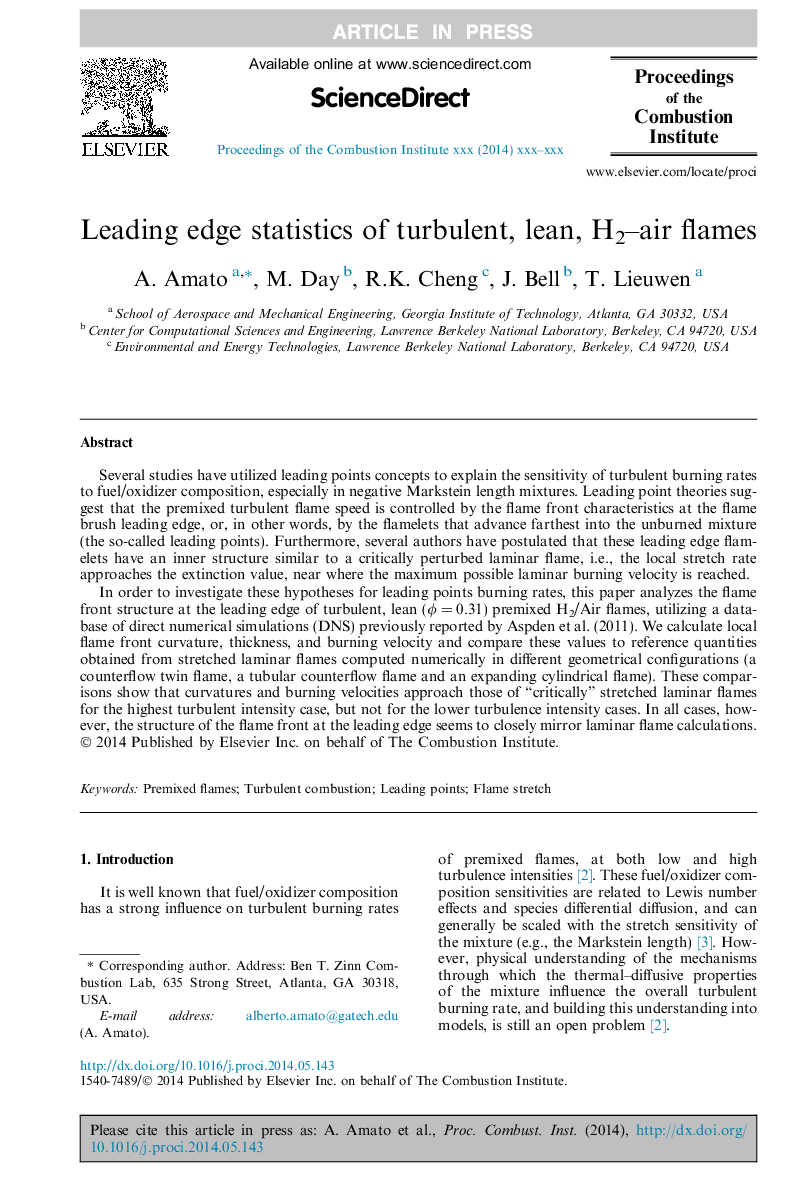| Article ID | Journal | Published Year | Pages | File Type |
|---|---|---|---|---|
| 6679211 | Proceedings of the Combustion Institute | 2015 | 8 Pages |
Abstract
In order to investigate these hypotheses for leading points burning rates, this paper analyzes the flame front structure at the leading edge of turbulent, lean (ÏÂ =Â 0.31) premixed H2/Air flames, utilizing a database of direct numerical simulations (DNS) previously reported by Aspden et al. (2011). We calculate local flame front curvature, thickness, and burning velocity and compare these values to reference quantities obtained from stretched laminar flames computed numerically in different geometrical configurations (a counterflow twin flame, a tubular counterflow flame and an expanding cylindrical flame). These comparisons show that curvatures and burning velocities approach those of “critically” stretched laminar flames for the highest turbulent intensity case, but not for the lower turbulence intensity cases. In all cases, however, the structure of the flame front at the leading edge seems to closely mirror laminar flame calculations.
Related Topics
Physical Sciences and Engineering
Chemical Engineering
Chemical Engineering (General)
Authors
A. Amato, M. Day, R.K. Cheng, J. Bell, T. Lieuwen,
